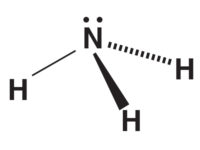Hydraulic modeling is seldom used in the day-to-day design of closed-loop or open-loop heating and cooling systems. I believe this is because engineers are too busy cranking out contract drawings and not focusing on looking ahead at the big picture.
Analogous to CAD when it first came out years ago, CAD was a drafting tool. It’s since been proven to be a design tool, a.k.a. computer-aided design drafting. Producers of this software, through research and development, expanded the programs’ ability to serve not only the design community but also the construction industry and facility management. One often overlooked feature of the software is its time management feature when the original consultant firm’s set-up person layers the computer-generated drawing. For example, drawn once, a piping system layout starts out showing the pipe distribution with a separate layer to show only pertinent components such as shut off valves, equipment, or control devices to mention three useful layers for the HVAC contractor and/or the facility technician.
Without going into all the features of drawing something once and then utilizing this drawing for numerous other design engineering needs, as well as letting others (e.g., estimator, field fabrication coordinator, emergency planner, service technician) use the CAD drawing in lieu of regenerating the drawing to meet their needs/obligations, let’s just agree this software is a time management tool. The same applies to time management using hydraulic modeling.
For the designer. Computer-generated model/drawing: Once done, change the program input and value-engineer pipe sizes based on a different water supply-return Delta T. Value engineer the type of material from steel pipe (2.5 in and larger) to soldered copper pipe, avoiding additional costs associated with welding.
Facility manager. Using the base drawings, sign off on shutoff valve locations and isolation of piping zones.
HVAC contractor. Using the same drawing, complete the job estimate while looking for potential value added savings opportunity. In the initial phase of construction, this drawing can be fine-tuned into an as-built drawing rather than prequalify it as a Record Drawing (which is different from as-built).
Mechanical-electrical coordinator. The use of this piping drawing overlaid with sheet metal fabrication, electrical, etc., can provide field coordinated documents before the trade contractors fabricate their systems, so they can identify any changes/conflicts to this system layout that could affect the hydraulic model.
Third-party TAB. Using the same drawing and the hydraulic data (GPMs, velocities, pressure drops, and pipe size), designate where TAB readings will be taken, include in TAB final report, and provide the design engineer with actual hydraulic data to update the initial hydraulic model for future use (e.g., system alterations and/or extension to a building addition).
Automatic controls. Using the drawing, the control submittal can indicate where devices and sensors should be located for optimum performance. The control technician can document as-built conditions and use this drawing(s) for system owner-operator training.
Facility management-emergency plan. Using the same drawings showing the shutoff valves, a building manager can train the operators on where to go for isolating a section of piping and/or piece of equipment, should a break occur.
Facility management-calibration, repairs, and testing. Using the same drawing showing the control components, a building manager is better prepared to respond to system problems (e.g., bad control device).
Facility management-bar coded equipment. With the equipment on a layer of its own, import a bar code that will link the maintenance person to the piece of equipment shown on the drawing, and the software program can bring up the work order from the CMMS program.
With a creative, open mind, I’m sure there are numerous other features to be included in this design-it-once CAD/hydraulic modeling document. That said, once the design engineer uses a single computer-generated hydraulic model of the piping system overlaid on an architectural drawing, I have referenced five other users for this same drawing. Each user will save an estimated minimum 40 hrs of unnecessary labor to reuse rather than recreate this document for their specific needs. But more importantly in this computer age, a hydraulic model is the 21st-century time saving tool that CAD software was to the building industry in the 20th century. ES




